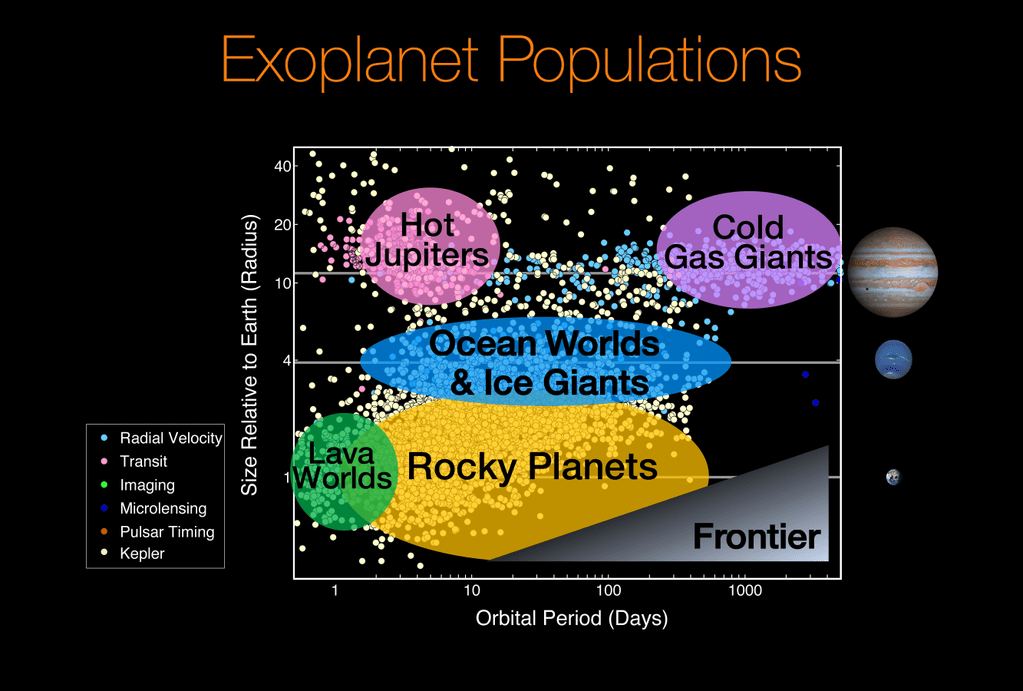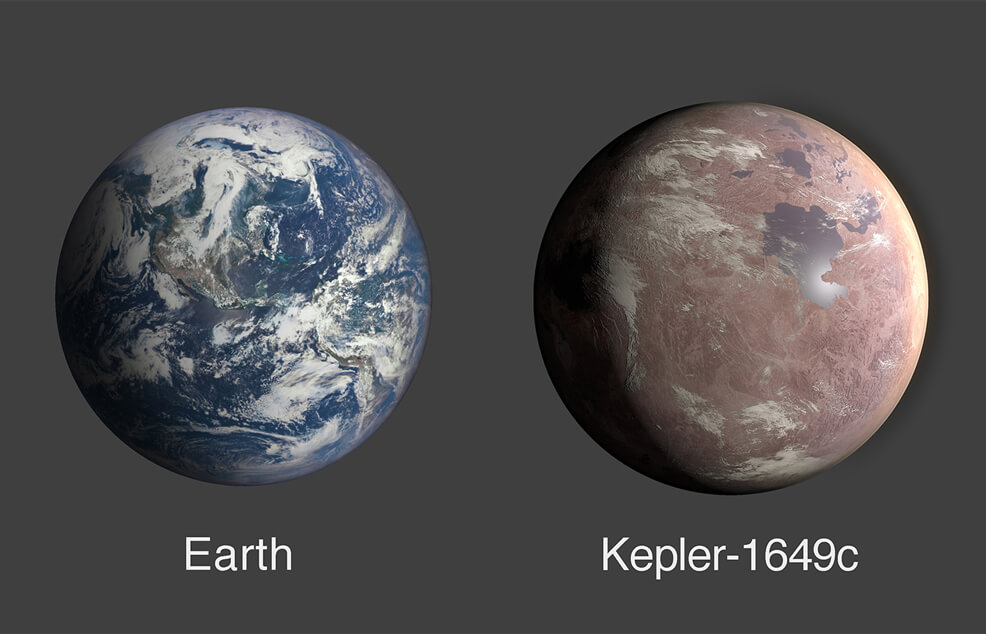The planets in our solar system are broadly divided into two groups: small, rocky worlds like Earth, and large gas giants. Before the discovery of exoplanets, it was thought that our solar system was very typical. The light and heat of a star push the gas to the outer solar system, while heavier dust remains closer to the star. Thus a solar system has close rocky planets and distant gas giants. But we now know that planets and star systems have much more diversity.
The most common way to categorize exoplanets is by their mass or size. Jovian worlds are the largest, then Neptunians, super-Earths, Earth-sized, and sub-Earths. Obviously, there is the greatest interest in potentially-habitable Earth-like worlds, which would have a similar mass and orbit to our planet. But there is still much we don’t understand about other types of planets. For example, super-Earths are slightly larger than Earth but are they terrestrial planets, or more gas-like. For this reason, the group is sometimes further divided into those smaller than about 1.6 Earth-radii, which are likely rocky, and larger super-Earths, often called Mini-Neptunes, which probably have more in common with gas giants.

Since we can’t observe most exoplanets directly, one way to study them is by looking at their statistics. For example, statistically, there is a gap between large Earths and mini-Neptunes. This gap around 1.6 Earth radii points to separate ways of forming. For sub-Earths, things are less clear. Planets the size of Mars or Mercury are difficult to find, which is part of the reason there are so few known sub-Earth exoplanets. This makes a study of their statistics more difficult. But a new statistical study points to an interesting origin for these small worlds.
Since the number of confirmed sub-Earths is so small, the team looked at a collection of candidate planets. Observational data suggests these might be planets, but the data isn’t strong enough to be certain. Out of more than 4,000 candidate planets, they filtered out all everything except worlds with short orbital periods (less than 16 days) and smaller in size than 4 Earth-radii. This left them with 280 candidates, which is enough to do some basic statistics.

One of the things they found is that the distribution of size for these exoplanets follows a power law distribution. In other words, the statistical number of planets increases by some order of magnitude (or power) as you get smaller. The size of asteroids in our solar system follows a power-law distribution, and we know that the asteroids formed long after the classical planets had captured much of the material of the early solar system. Since sub-Earths follow a similar distribution, it’s very likely they also formed later.
The authors refer to this two-stage formation process as Generation I (large planets) and Generation II (terrestrial sub-Earths). If this idea is correct, it could explain why super-Earths seem to be more common than truly Earth-sized worlds. If planets like Earth are Generation II, they would be quite rare. It’s important to keep in mind, however, that the sample used is pretty small. While the study is interesting, we’ll need more data before we can draw any solid conclusions.
Reference: Yansong Qian and Yanqin Wu. “A Distinct Population of Small Planets: Sub-Earths.” arXiv preprint arXiv:2012.02273 (2020).


“subterran” is going to cause confusion over the word subterranean
We may need a name for close orbiting metallic cores left behind when gas giants are stripped of their gasses. Maybe ‘Mercurian Planets’ as I believe Mercury fits the category.